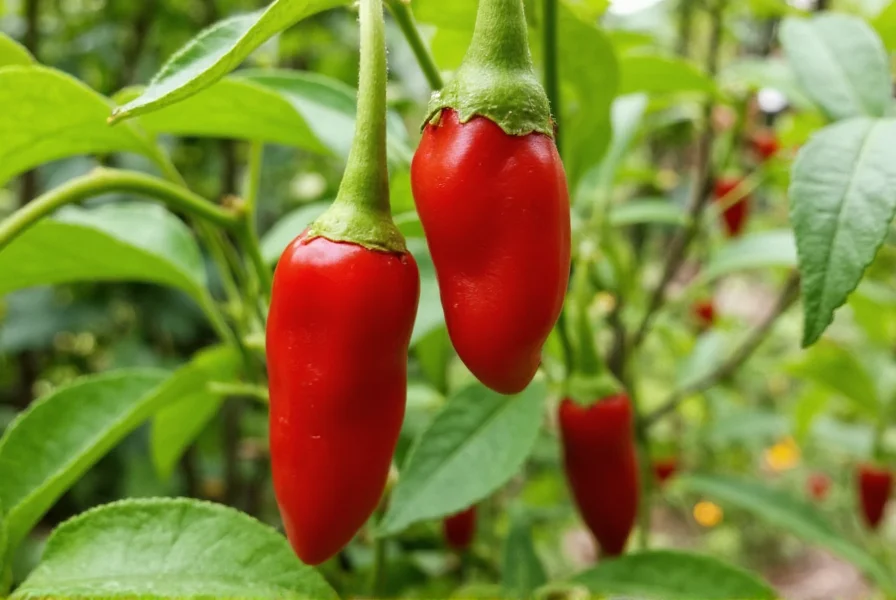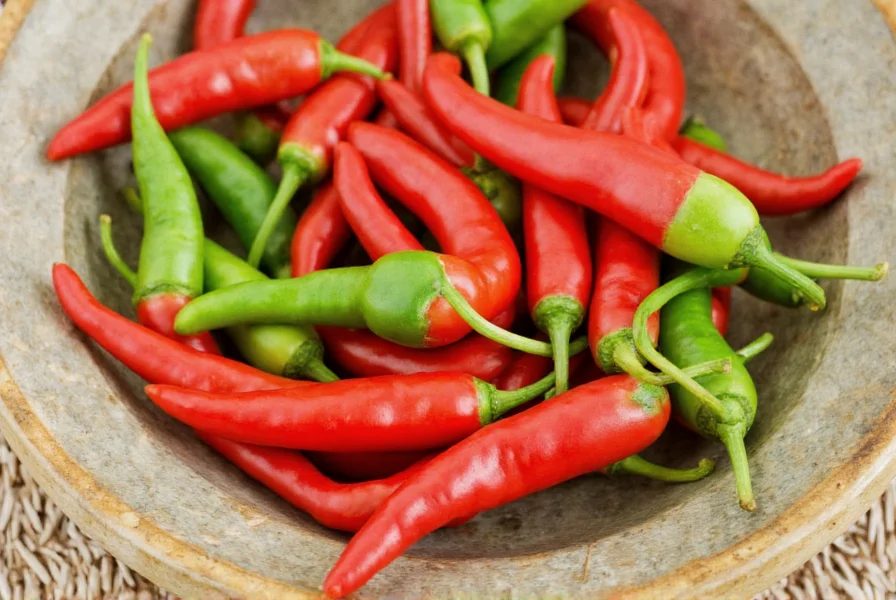Cayenne pepper has been valued for centuries not only as a culinary staple but also for its medicinal properties. This slender, pointed chili typically measures between 30,000–50,000 Scoville Heat Units (SHU), placing it firmly in the medium-to-hot range of the chili pepper spectrum. Understanding the nutritional value of cayenne pepper reveals why it's become a popular addition to health-conscious diets worldwide.
Origins and Historical Significance
Native to the tropical regions of the Americas, cayenne pepper was first cultivated by indigenous peoples long before European contact. Christopher Columbus mistakenly identified these fiery pods as "peppers" due to their pungent quality resembling black pepper (Piper nigrum), though they're botanically unrelated. The name "cayenne" derives from the city of Cayenne in French Guiana, where the pepper was commonly traded.
Traditional medicine systems across Mesoamerica incorporated cayenne for digestive support, pain relief, and as a preservative. Its journey to global prominence began with colonial trade routes, eventually becoming integral to cuisines from Louisiana Creole to West African cooking.
Nutritional Profile and Key Compounds
The health benefits of cayenne pepper primarily stem from capsaicin, which constitutes approximately 12% of the pepper's dry weight. This bioactive compound interacts with TRPV1 receptors in the body, triggering various physiological responses. Beyond capsaicin, cayenne offers impressive nutritional content per tablespoon (5g) of powdered form:
| Nutrient | Amount | Daily Value % |
|---|---|---|
| Calories | 17 | 1% |
| Vitamin A | 44% DV | Supports vision and immune function |
| Vitamin C | 8% DV | Antioxidant and immune support |
| Vitamin B6 | 6% DV | Metabolism and brain health |
| Manganese | 5% DV | Bone health and metabolism |
These nutrients contribute to cayenne's reputation as a functional food with multiple health applications. The capsaicin in cayenne pepper particularly drives many of its scientifically studied benefits.
Scientifically Supported Health Benefits
Research continues to validate traditional uses of cayenne pepper while uncovering new applications:
Metabolic Enhancement
Multiple studies indicate that capsaicin can increase energy expenditure by 50-100 calories daily through thermogenesis. This cayenne pepper for weight loss mechanism, while modest, contributes to long-term metabolic health when combined with other healthy habits.
Cardiovascular Support
Regular consumption shows potential for improving blood circulation and reducing LDL cholesterol oxidation. A 2021 review in Nutrients highlighted cayenne's role in promoting nitric oxide production, which helps maintain healthy blood vessel function.
Pain Management
Topical capsaicin creams (containing 0.025%-0.075% capsaicin) are FDA-approved for managing neuropathic pain. The compound depletes substance P, a neurotransmitter involved in pain signaling, providing relief for conditions like osteoarthritis and diabetic neuropathy.
Culinary Applications and Flavor Profile
Cayenne pepper delivers a clean, sharp heat with subtle fruity undertones that distinguishes it from other chili varieties. Chefs value its ability to add heat without overwhelming other flavors. Understanding how to use cayenne pepper in cooking properly ensures optimal results:
- Add powdered cayenne early in cooking for infused heat
- Use fresh cayenne peppers in salsas and stir-fries for brighter flavor
- Balance with acidic ingredients like lime juice to enhance complexity
- Start with small amounts (1/8 teaspoon) and adjust to taste
When comparing cayenne pepper vs red pepper flakes, note that cayenne provides more consistent heat as it's typically made from a single pepper variety, while red pepper flakes contain a blend of dried chilies with variable heat levels.

Practical Usage Guidelines
For those incorporating cayenne into their routine, consider these evidence-based recommendations:
Dosage Considerations
The cayenne pepper dosage for general health benefits typically ranges from 30-135 mg of capsaicin daily, equivalent to about 1/8 to 1/2 teaspoon of powdered cayenne. Culinary use rarely exceeds these amounts, but supplements require careful adherence to product instructions.
Storage Best Practices
To preserve potency and flavor:
- Store dried cayenne in airtight containers away from light and heat
- Whole peppers last 1-2 weeks refrigerated or up to 6 months frozen
- Ground cayenne maintains quality for 6-12 months when properly stored
Potential Side Effects and Precautions
While generally safe as a food ingredient, some individuals may experience adverse reactions to cayenne pepper. Understanding cayenne pepper side effects helps prevent discomfort:
- Gastrointestinal irritation in sensitive individuals or with excessive consumption
- Skin and eye irritation when handling fresh peppers (always wear gloves)
- Potential interactions with blood thinners and blood pressure medications
- Temporary burning sensation that typically subsides within hours
Those with gastrointestinal conditions like ulcers, IBS, or GERD should consult healthcare providers before regular consumption. Start with minimal amounts to assess tolerance before increasing intake.

Comparative Analysis with Related Peppers
Understanding where cayenne fits within the chili pepper family helps in selecting appropriate varieties for different applications:
| Pepper Type | Scoville Range | Flavor Profile | Common Uses |
|---|---|---|---|
| Cayenne | 30,000–50,000 SHU | Sharp, clean heat with fruity notes | Culinary spice, supplements |
| Serrano | 10,000–23,000 SHU | Bright, grassy with immediate heat | Salsas, fresh applications |
| Habanero | 100,000–350,000 SHU | Fruity, floral with delayed intense heat | Hot sauces, Caribbean cuisine |
| Jalapeño | 2,500–8,000 SHU | Grassy, vegetal with moderate heat | Stuffed peppers, nachos, pickled |
This comparison illustrates why cayenne serves as a versatile middle-ground option—hotter than jalapeños but less intense than habaneros, making it suitable for those seeking noticeable heat without extreme spiciness.
Integrating Cayenne Into Your Wellness Routine
For those interested in harnessing the health benefits of cayenne pepper, consider these practical approaches:
- Morning tonic: Mix 1/4 teaspoon cayenne with lemon juice and honey in warm water
- Culinary enhancement: Add to roasted vegetables, soups, or marinades
- Topical application: Use FDA-approved capsaicin creams for localized pain relief
- Supplementation: Choose standardized extracts with clear capsaicin content
Remember that consistency matters more than intensity—regular moderate consumption yields better results than occasional heavy doses. Pair cayenne with healthy fats like avocado or olive oil to enhance absorption of its fat-soluble compounds.
Conclusion
Cayenne pepper represents a remarkable convergence of culinary delight and physiological benefit. Its distinctive heat profile, nutritional density, and scientifically supported health applications make it a valuable addition to both kitchen pantries and wellness regimens. By understanding proper usage, potential benefits, and necessary precautions, individuals can safely incorporate this vibrant spice to enhance both flavor experiences and overall health. As with any dietary component, moderation and personal tolerance should guide consumption, ensuring that cayenne pepper remains a beneficial rather than burdensome addition to daily life.
Frequently Asked Questions
What is the primary compound responsible for cayenne pepper's heat and health benefits?
Capsaicin is the primary bioactive compound in cayenne pepper responsible for both its characteristic heat and many of its scientifically studied health benefits. This compound interacts with TRPV1 receptors in the body, triggering various physiological responses including pain relief and metabolic enhancement.
How much cayenne pepper should I consume daily for health benefits?
For general health benefits, a typical daily amount ranges from 30-135 mg of capsaicin, equivalent to approximately 1/8 to 1/2 teaspoon of powdered cayenne pepper. Culinary use typically falls within this range, but those using supplements should follow product-specific instructions and consult healthcare providers when necessary.
Can cayenne pepper help with weight loss?
Research suggests cayenne pepper may support weight management through modest metabolic enhancement. Studies indicate capsaicin can increase daily energy expenditure by 50-100 calories through thermogenesis. While not a standalone solution, it can be a beneficial component of a comprehensive weight management approach when combined with proper nutrition and exercise.
What are the potential side effects of consuming too much cayenne pepper?
Excessive cayenne pepper consumption may cause gastrointestinal irritation, including heartburn, stomach pain, or diarrhea in sensitive individuals. Topical exposure can cause skin and eye irritation. Those with conditions like ulcers, IBS, or GERD should be particularly cautious. Always start with small amounts to assess tolerance before increasing consumption.
How does cayenne pepper differ from red pepper flakes?
Cayenne pepper typically refers to a single variety ground into a fine powder, providing consistent heat and flavor. Red pepper flakes contain a mixture of dried chili varieties with varying heat levels and flavors. Cayenne generally delivers cleaner, more predictable heat, while red pepper flakes offer a more complex flavor profile with seeds and membrane fragments contributing additional texture and variable spiciness.











 浙公网安备
33010002000092号
浙公网安备
33010002000092号 浙B2-20120091-4
浙B2-20120091-4